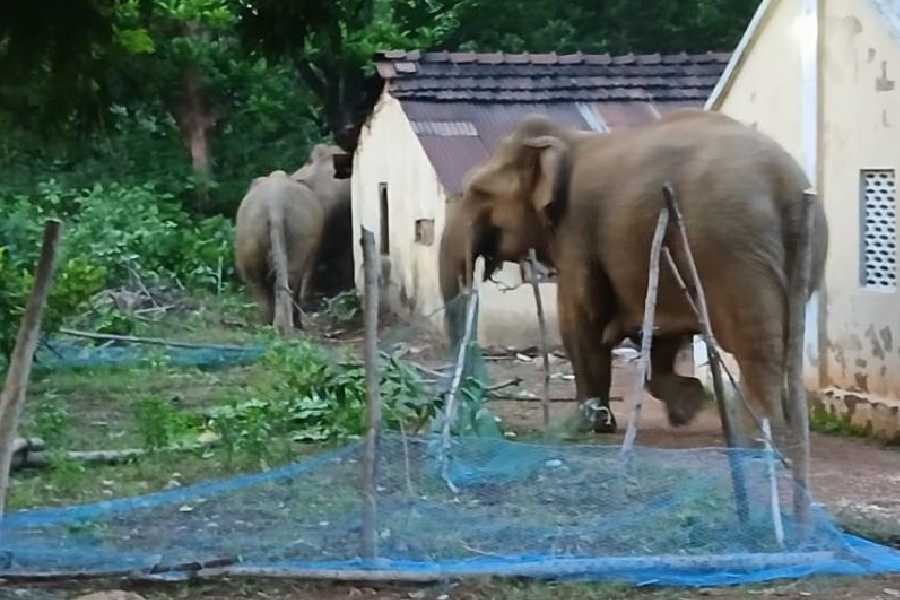The Kurseong forest division has installed 60 CCTV cameras at strategic locations and formed 11 quick response teams to monitor the movement of wild elephants and minimise human-animal conflicts.
Over 120 elephants are roaming across the foothills, where CCTV cameras will come in handy for surveillance.
The surveillance network covers the Bagdogra, Panighata, Tukuriajhar and Bamanpokhri ranges. A central control room has been established at the Bagdogra office to monitor real-time footage and coordinate field response.
“Digital monitoring is helping us reduce both crop damage and human casualties. The cameras also help us detect intrusions by elephants into human habitats and by people into forests despite warnings,” Kurseong divisional forest officer Devesh Pandey said.
The forest department’s efforts have already shown results.
While nine people died in elephant attacks last year, only one fatality has been reported so far in 2025. The department, which had paid ₹60 lakh in compensation last year, believes increased vigilance and awareness campaigns have played a vital role in minimising the number of deaths caused by animal attacks.
“Our teams are out every night, tracking the movement of elephants and ensuring that they don’t stray into villages or farmlands. Rescuing people from the forest at night has become an additional concern,” Pandey said.
In two separate incidents, forest guards recently rescued individuals who had ventured into elephant zones, one in the Panighata range and the other in the Bagdogra area. The foresters said major mishaps were averted because of swift action by patrolling teams.
While 32 CCTV cameras are installed in Bagdogra, 14 are placed at Panighata. Tukuriajhar and Bamanpokhri have seven CCTV cameras each. These locations were selected based on elephant movement patterns and prior instances of conflicts.
Pandey has urged people not to venture into forests, especially at night. “We urge people not to venture into forests, especially at night. Our awareness drives are going on, but more cooperation from local people is needed,” the DFO added.
The department hopes the combination of technology, rapid response and community awareness will help minimise both damage and danger.











